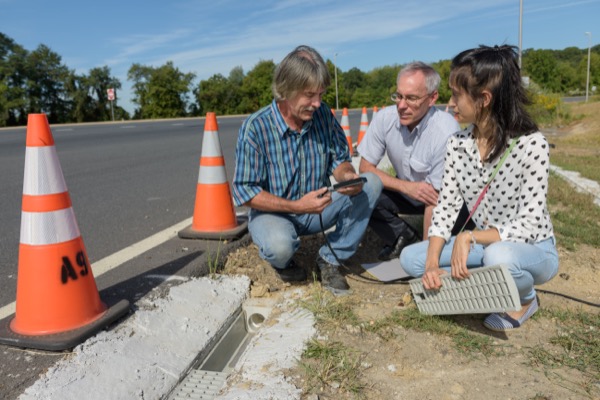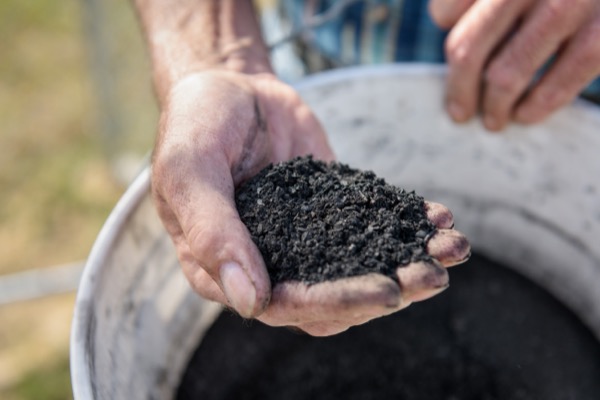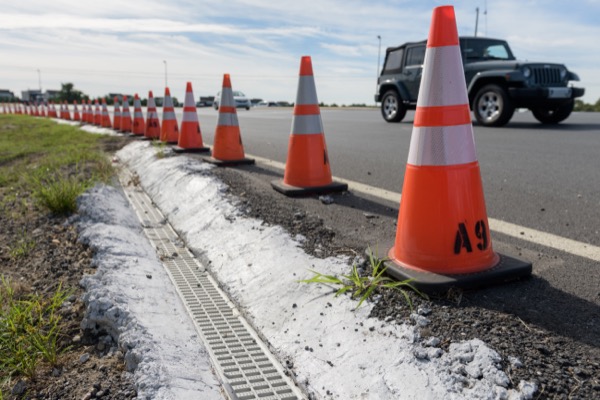


Biochar to the rescue
Environmental engineering faculty study novel approach to stormwater management
11:17 a.m., Sept. 30, 2015--When stormwater runs off impervious surfaces like pavements and roofs, it bypasses nature’s filtering system and moves rapidly through storm drains, sewer systems and drainage ditches into creeks and rivers, carrying with it pollutants such as nutrients, heavy metals and bacteria.
The U.S. Environmental Protection Agency has been promoting the use of “green infrastructure” to manage and reduce stormwater pollutants, but the design, installation and maintenance of this type of infrastructure is expensive.
Research Stories
Chronic wounds
Prof. Heck's legacy
Environmental engineering faculty members Paul Imhoff, Pei Chiu and Julia Maresca at the University of Delaware believe there may be a better way to manage stormwater runoff and pollutants, using existing greenways and landscape areas, and they recently received more than $400,000 to investigate their novel idea.
With funding from the National Fish and Wildlife Foundation and the National Cooperative Highway Research Program (NCHRP) IDEA Program, the team will study the use of biochar to improve infiltration, water retention, and nutrient retention and transformation in soils. Biochar is a carbon-rich solid, similar to charcoal, produced as an upcycled byproduct from the pyrolysis of waste biomass.
“A key feature of biochar is its relatively large internal porosity, surface area and ability to promote beneficial microbial processes,” Imhoff says. “The benefit of biochar addition to soils with poor structure and limited organic matter was recently ‘discovered’ through a study of the terra preta soils of the Amazon basin. Biochar that was added to the soil centuries ago continues to dramatically influence soil fertility today.”
With a two-year grant from NCHRP through its IDEA (Innovations Deserving Exploratory Analysis) program, the team will conduct lab tests to quantify the impact of biochar on water retention, infiltration and nitrogen transformation in highway greenways.
Imhoff explains that the typical highway right-of-way comprises highly compacted soil covered by just a few inches of topsoil that is stabilized by the application of fertilizer and grass seed.
“This condition clearly does not create anything like a ‘natural’ soil, and the vegetation often grows poorly with a shallow root structure,” he says. “Recent studies show that such conditions result in stormwater runoff with minimal water quality treatment as well as poor water retention and infiltration.”
“We think that amending soils with biochar will lead to significant increases in water retention, slowing down the movement of stormwater,” he adds. “This approach may also enhance the transformation of nitrogen compounds in stormwater.”
The team, which includes engineers and environmental scientists from RK&K Engineers and reGenesis Consulting Services Inc., will also carry out two pilot-scale field demonstration projects in Middletown, Delaware, with a two-year grant from the National Fish and Wildlife Foundation.
Stormwater quality and quantity data will be collected on biochar-amended and untreated sections of a filter strip and a drainage ditch over a period of 18 months. Microbial assays will be used to quantify biochar’s influence on microbial populations in soils.
These data will be used to develop metrics for soil restoration with biochar, including increase in field capacity, runoff reduction volume, annual nitrogen reduction and soil restoration economics.
“We believe that by restoring the greenways, municipalities and state departments of transportation will reduce the need to purchase additional rights-of-way for stormwater treatment, decrease the number and complexity of best management practices and cut design and installation costs,” Imhoff says.
Article by Diane Kukich
Photo by Evan Krape










